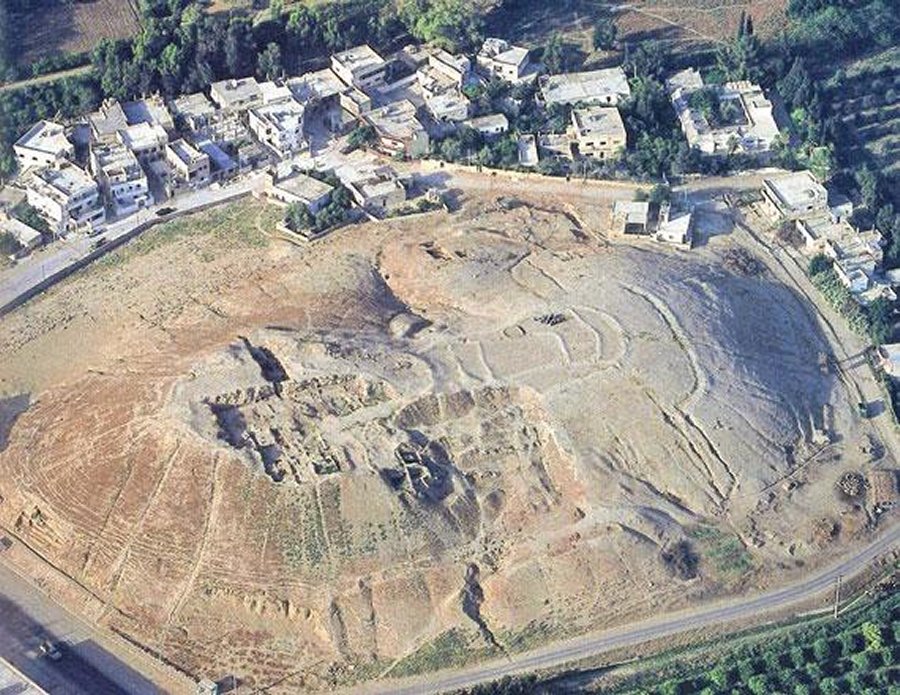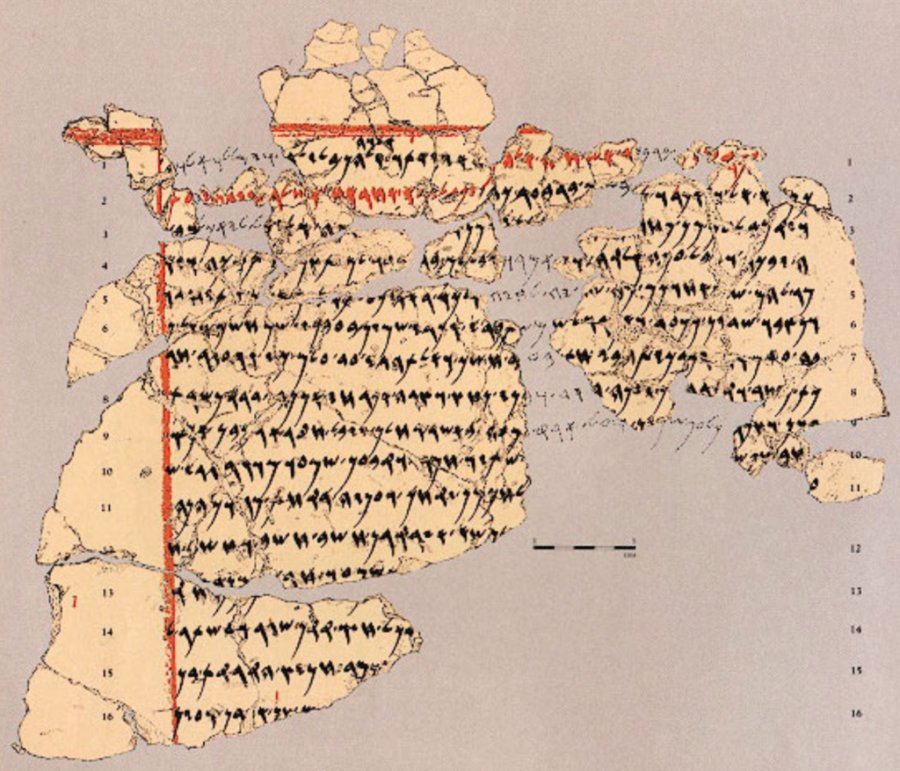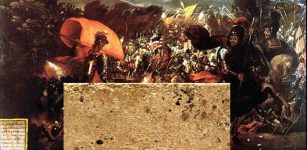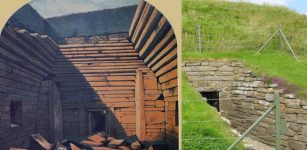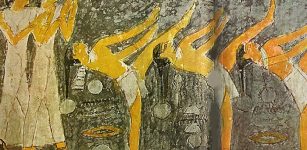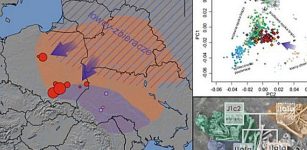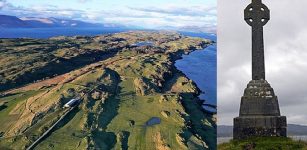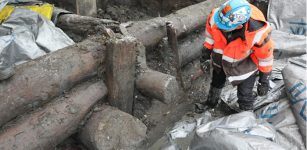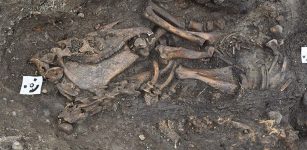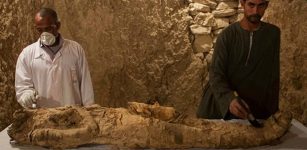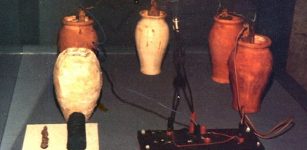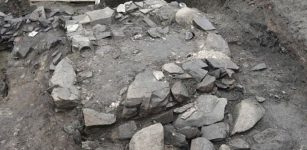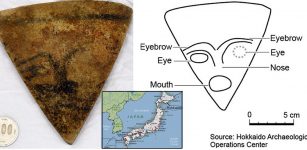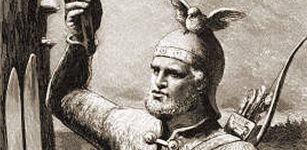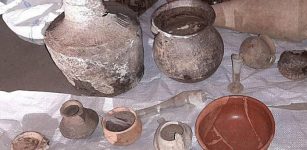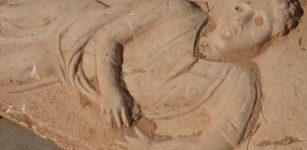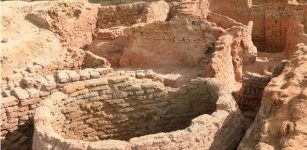Iron Age Site Tell Deir ‘Alla (“Mound Of The High Monastery”) Flourished 400 Years In Central Jordan Valley
Conny Waters - AncientPages.com - The site of Tell Deir ‘Alla (“mound of the high monastery”), in the central Jordan Valley, was a settlement during the 13th century BC and functioned as a town, according to Professor Emeritus Zeidan Kafafi, a distinguished Jordanian archaeologist.
An aerial view of Tell Deir Alla archaeological site in the Jordan Valley. Recent excavations show a previously unrecorded level of urbanisation at the site (Photo courtesy of Zeidan Kafafi)
“Unfortunately, neither burials nor a cemetery dating to the period ranging from ca. 1300-1000 BC, belonging to the dwellers of Tell Deir ‘Alla, were found at the site or in the close neighborhood,” said Kafafi.
Scholars argued that the uncovered Late Bronze Age II (ca. 1400-1300 BC) graves at the site of Kataretes-Samra, located only 6km to the southeast of Tell Deir ‘Alla, might belong to the dead people of the site at that time, writes The Jordan Times.
According to Kafafi, 2010, a Jordanian-Dutch team founded the site between the villages of Sawalha and Abu Nu’aym, which belonged to the Deir ‘Alla municipality.
A bell-shaped pit was found below the surface soil, which widened to three meters in diameter and reached two meters in depth. The excavators uncovered fragmentary human remains inside this pit, dated to the Iron Age,” Kafafi said.
In 1977, the cemetery of Tell Mazar, situated around three kilometers north-northwest of Tell Deir ‘Alla, was found in an area located only 220 meters to the west of the main settlement.
Transcription from Deir 'Alla inscription. Image credit: - CC BY-SA 4.0
Moreover, the cemetery consisted of Iron Age architectural debris dated back to between the 11th and mid-10th centuries BC, which formed a mound rising ca. 1.80m above the surrounding farmland and sloping to the north and south directions, the archaeologist said.
The archaeological team discovered 84 graves inside the cemetery. However, the cemetery does not exist anymore due to the cultivation operation,” Kafafi said, adding that the material excavated inside the graves pointed to the Iron Age II C period (ca. 700-586 BC).
According to an ancient tradition, the dead were buried in one-meter-deep graves.
“Funerary objects were put with the dead. The kind and type of gifts are enlightening about the social status of the buried people. Funerary equipment consisted of metal such as pins, fibulae, daggers, swords, knives, arrowheads, spearheads, bracelets, armlets, belts, anklets, seals, scarabs, beads, and pottery vessels,” Kafafi said.
The Tell Deir ‘Alla excavations did not reveal many archaeological data from the second half of the Iron Age I (ca. 1100-1000 BC). Historically, the Tell Deir ‘Alla has been identified by some scholars as biblical Succoth and by others as Penuel, both punished by Gideon for refusing to help pursue the Midianites (Judg. 8:4-17).
The Tell Deir ‘Alla functioned for approximately 400 years before being destroyed in an earthquake and fire in the early 12th century AD.
With associated workshops, the site contained a large quantity of locally made pottery. Many foreign objects are evidence of an extensive trade network between Egypt, Mesopotamia, the Levant, and Mycenae.
A view of Tell Deir ‘Alla site in the Jordan Valley. Photo courtesy of ACOR/ Nancy Lapp Collection
The settlement flourished in the Iron Age as a popular trading station with religious significance. Among the most important finds were some inscriptions in an early form of Aramaic. One of them was written in black and red ink from the 9th century BC. This inscription - considered unique in being written on a wall - recounts an unknown prophecy of Balaam, son of Beor, who thereby becomes the first Old Testament prophet to be identified in an inscription. This character also appears in the Bible (Num. 22-24) but unfortunately, in an unfavorable light.
Kafafi also says that Tell Deir ‘Alla and nearby sites flourished culturally during the later Iron Age (ca. 1000-586 BC).
See also: More Archaeology News
“The excavated archaeological Iron Age site in Ghor Abu Obeideh indicated a high presence of Ammonite culture. It might reveal that this part of the Jordanian Valley belonged to the Ammonite Kingdom during the 7th and 6th centuries BC.”
Written by Conny Waters - AncientPages.com Staff Writer

